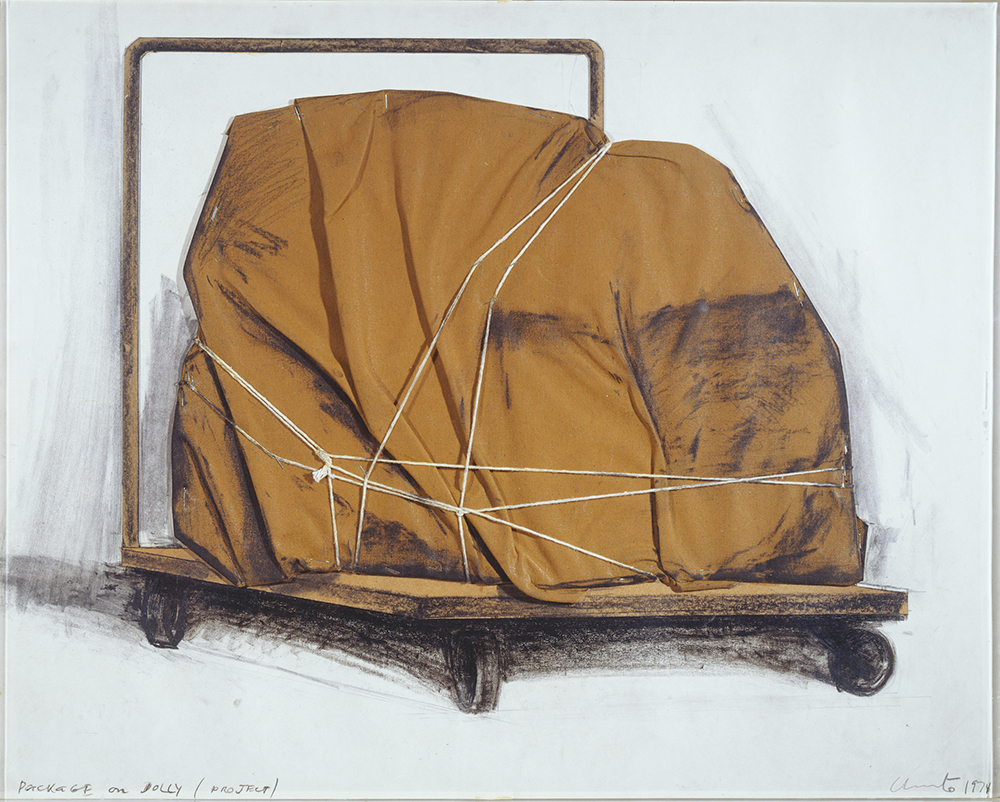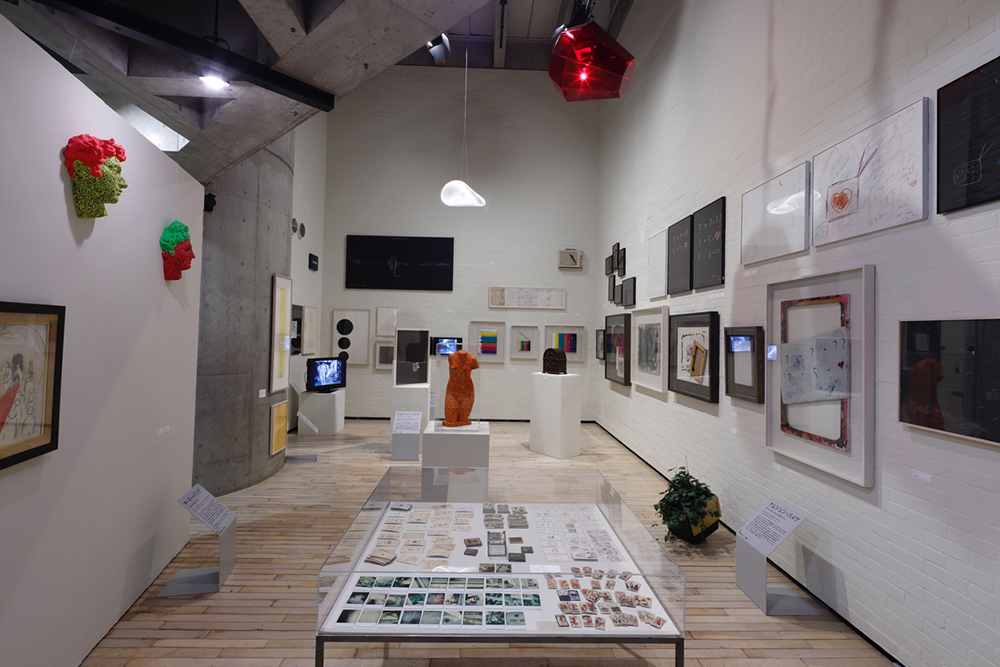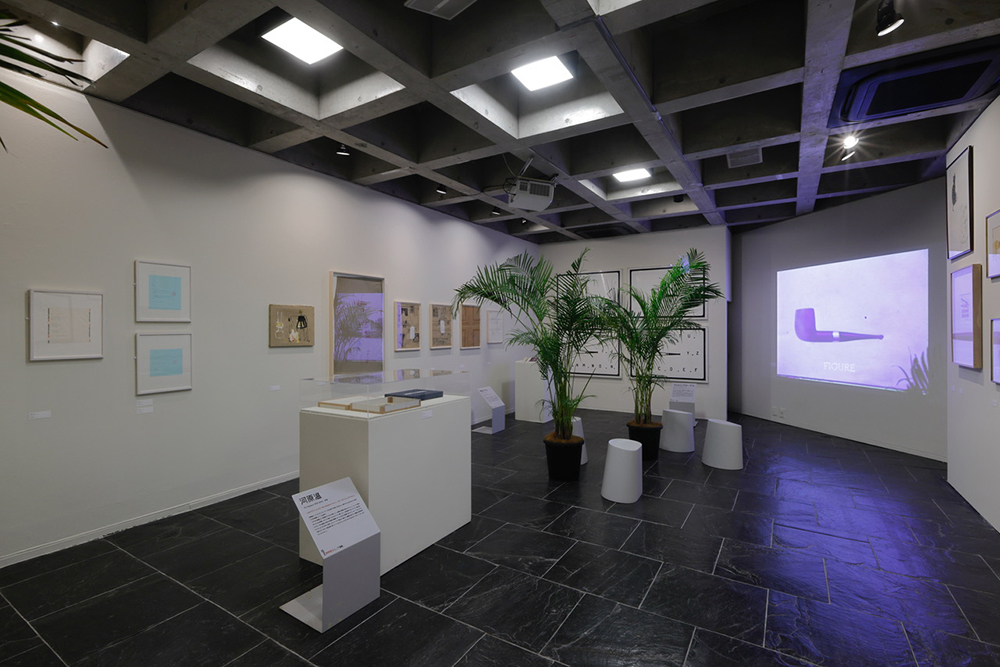EXHIBITION
When you gaze at a flower, what are you looking at?
Nam June Paik drew two flowers on a piece of paper as a drawing work. One on a TV monitor, and the other planted in a pot with the words “FLUX” painted on it.
FLUXUS, which means “flowing” in Latin, is the international art movement led by George Maciunas in the 1960s, and is the starting point of Nam June Paik’s career as an artist, who is called the father of video art.
“Once a person is caught on videotape, they cannot be allowed to die” – Nam June Paik
Will the flower on the monitor not allowed to wither?
With the pandemic, in just two years, it has become a special thing to meet someone in person. Encounters come through the screen of a monitor. Through the screen, the encounter relies more on the sense of sight, while sense of touch or smell seem to be powerless. As screens continue to be shared, sight has become a sense shared with others, more than an individual sense. We are no longer conscious of ourselves and others. Our own experiences and those of others, our own feelings and those of others, mixed together, and even the distinction between them is difficult.
Nevertheless, flowers bloom and wither beautifully, and it is you, the person looking at the flower, who feels the beauty of flower.
The lines of artists’ drawings become an auxiliary line to unknown visions when we gaze at the them. Encountering drawings is like walking down a street. You are walking to an unknown place at your own pace. A Trip by vision is accompanied by physical sensations.
Squinting at a flower across the river, or staring at a drawing of a flower in front of you with your eyes wide open. At that moment, your eyes have a beautiful expression just like a flower.
In this exhibition “Vision,” we hope you enjoy visual experience through the artists’ work. We exhibit about 160 drawings and paintings by 14 artists from our museum’s collection, including Andy Warhol's first drawing book “25 Cats Named Sam and One Blue Pussy,” Nam June Paik’s drawings of smiling TV or crying TV, and blackboard drawing “Continuity” which Joseph Beuys drew in Tokyo in 1984. In addition, as a guest artist, Hiraki Sawa's video works “/home” and “/home (absent room)” and his new drawings shall be shown.
In 1972, the gallery of the predecessor of WATARI-UM, The Watari Museum of Contemporary Art opened. The artists you can meet in our collection are now leading contemporary artists. The attitude of interacting with artists and creating exhibitions while encountering new art works has been passed down to the exhibitions in WATARI-UM.
We hope you can enjoy our collection.
WORKS
-

Ryoko Aoki
Workshop Free Molecules Metamorphoses, 2019-2020 -

Zon Ito
Lateral line, 2003 -

Sigmar Polke
Untitled, 1969 -

Nam June Paik
Untitled, 1979 -

Joseph Beuys
Making of the Score “Continuity”, 1984 -

Olafur Eliasson
Homage to P. Schatz, 2012 -

Andy Warhol
25 Cats Named Sam and One Blue Pussy, 1954 -

Keith Haring
Untitled (toruso), 1983 -

Jonathan Borofsky
I dreamed the Myersons had a Beautiful inner court yard, 1973 -

Christo
Package on Dolly (project), 1974 -

Julian Schnabel
Loup, 1988 -

Marcel Broodthaers
"aa"-"bcdeefgi", 1974 -

On Kawara
6 JUL. 1984 -

Kaoru Arima
Kaoru Arima, I’ll glare and glare and glare but that’s not enough but that’s not enough, 1997 -

Hiraki Sawa
/home (absent room), 2017-2021 ©︎hiraki sawa
PROFILE
-
Ryoko Aoki
1973-, Japan
Creates installations that combine images of animals and plants, fragments from the everyday life, geometric patterns and other motifs drawn in succession.
-
Zon Ito
1971-, Japan
Produces animation works, drawings, sculptures in addition to embroidery works.
-
Sigmar Polke
1941-2010, Germany
Attempted to reconsider the image in print culture and painting itself through works that freely combine a variety of materials and styles.
-
Nam June Paik
1932-2006, Korea/USA
The first to incorporate media such as TV and video into art and become a leading person in “media art.” His works show a fusion of technology and Eastern thought.
-
Joseph Beuys
1921-1986, Germany
Proposed the concept of “social sculpture” and has influenced many forms of art since the late 20th century. “Everyone is an artist” is famous phrase of Beuys.
-
Olafur Eliasson
1967-, Denmark
Creates works that question the mechanisms of human perceptions and recognitions, using elements of the natural world such as space, light, water, and fog.
-
Andy Warhol
1928-1987, USA
Started to create Pop Art works while working as a commercial illustrator in the 1950s. He acquired overwhelming popularity through the works depicting icons of popular culture.
-
Keith Haring
1958-1990, USA
Appeared from East Village in the beginning of the 1980s, immediately became a pioneer of graffiti art and gained international fame.
-
Jonathan Borofsky
1942-, USA
Using dreams as the subject matter, he creates works that pretend to be comical and unreal, while condensing and hiding social issues and human propositions.
-
Christo
1935-2020, Bulgaria
Questioned the definition of art through large-scale installations that “packaged” a whole entire huge building or nature.
-
Julian Schnabel
1951-, USA
One of leading figures of American New Painting in 1980s. He became famous for his huge paintings made by attaching broken ceramic plates to the canvas. In recent years, he has also been active as a film director.
-
Marcel Broodthaers
1924-1976, Belgium
Strongly influenced by René Magritte and had continued to explore the nature of art. Using familiar and traditional materials, he expressed his works using with extraordinary delicacy and irony.
-
On Kawara
1933-2014, Japan
A representative of the conceptual art world. He had produced a series of "Date Paintings" since 1966, in which he paints only the date of the day when the work was created.
-
Kaoru Arima
1969-, Japan
In 1966, renamed the apartment he was living in “Kiwamari House” and opened a gallery there, which attracted much attention. He engages in experimental painting like using newspapers as a support.
-
Hiraki Sawa
1977-, Japan
Creates dreamy film works by introducing images that supposed to exist in everyday space, such as a large number of airplanes flying inside a room.
SCENE
-

photo by: Keizo Kioku
-

photo by: Keizo Kioku
-

photo by: Keizo Kioku
-

photo by: Keizo Kioku
-

photo by: Keizo Kioku
-

photo by: Keizo Kioku
-

photo by: Keizo Kioku
-

photo by: Keizo Kioku
-

photo by: Keizo Kioku
-

photo by: Keizo Kioku
-

photo by: Keizo Kioku
-

photo by: Keizo Kioku
-

photo by: Keizo Kioku

